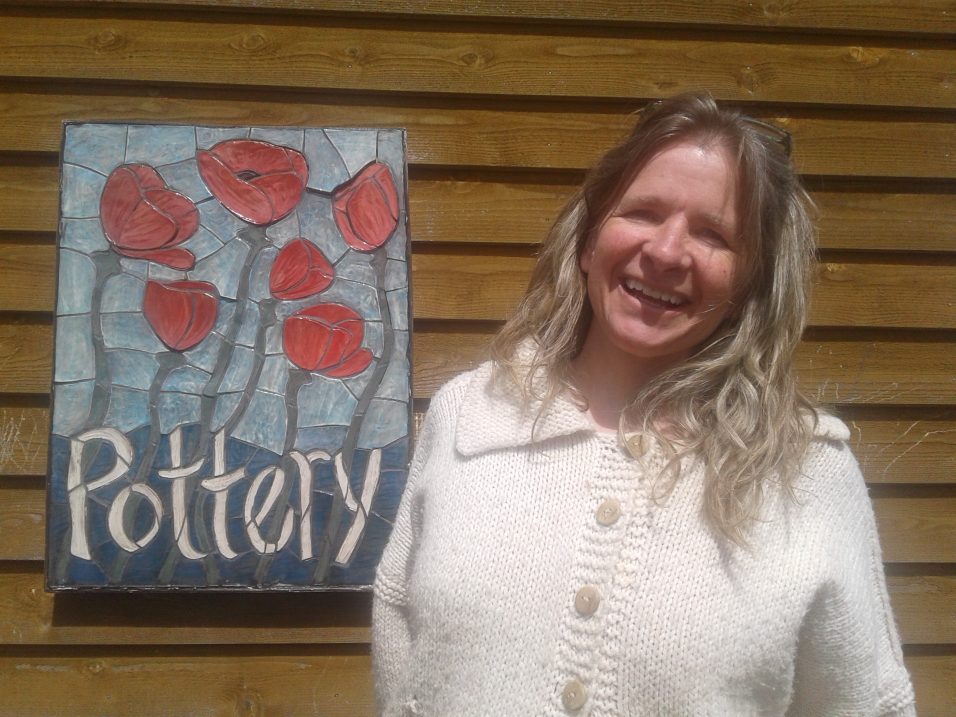A Handful of Clay and Concern for the Earth
By Anna Horsnell
Tracy Horsman’s pottery and ceramic art studio resides within a wonderful log cabin on her property overlooking Cape Blomidon and the Minas Basin. She doesn’t need to look far for inspiration. The surrounding fields and woodlands provide the perfect backdrop for creations made from the earth itself.
This is art that truly requires getting your hands dirty and Horsman admits she fell in love with clay the moment she first held it in her hands as a child. “I love the smell of it, the squishiness of it, and the three dimensions of clay,†she explains, “it also appeals to the science nerd in me.†There is indeed math, and physics, involved in why and how clay is able to be transformed into something functional that will last for centuries. She suggests that perhaps this is the difference between art and craft. Artists can break the rules, whereas craftspeople often can’t because of the inherent nature of their medium.
Horsman worked as a biologist for twenty years, until she made a life-changing decision. “I left my “successful†career in environmental conservation in 2010 because I believed strongly we (society) had failed at our environmental problem (the need to exist on the planet sustainably). I switched gears. I’m glad there are still amazingly dedicated and optimistic people working on understanding and coping with environmental change, but creative art for me isn’t a frivolous pursuit. It hones our skills for finding solutions to problems, rewires the brain to see new possibilities, keeps the mind nimble and builds confidence for learning new skills, encourages kindness and community. I guess I’m still working on our environmental problem, just from a very strange angle. It’s less about ecology and more about sociology now (and probably always has been).â€
She first learned how to throw and hand-sculpt clay from local artist Terry-Lee Bourgeois-King, and subsequently sought out other great teachers, including clay sculptors Louise Pentz and Tip Toland. Over the years, Horsman’s own work has become evenly split between functional and sculptural, and she enjoys the variety of constantly exploring new ideas versus more commercial production lines. Working with clay still excites her, and experimenting with glazes to create just the right colour adds challenge to the process. A monoprint of leaves in clay is not a unique technique, but Horsman is using it to record local plants, a record of tree growth that hopefully will be preserved well into the future. She is also inspired by world events, life in general, music, non-human companions, and simple acts of kindness.
Deciding to teach others was a conscious decision to open her studio to anyone interested in creating with clay. “I realize now how lucky I was as a kid. My parents, but especially my father, introduced us to art in a variety of ways that left a deep impression. I think this probably helped make up for the lack of art education in school for us. When I see how much public and private funding/support goes toward sports recreation, I feel sad that the arts currently don’t get anywhere near a similar level of support. In art, like sport, it can’t be about just supporting the “pros.” There’s a lot of unaccounted value in amateur participation and it creates more opportunities for professional artists.â€
Horsman offers classes in the spring and fall, and also opens her studio to those who wish to continue honing their own skills alongside her. Visit tracyhorsman.com, or email tracyhorsman@gmail.com.
